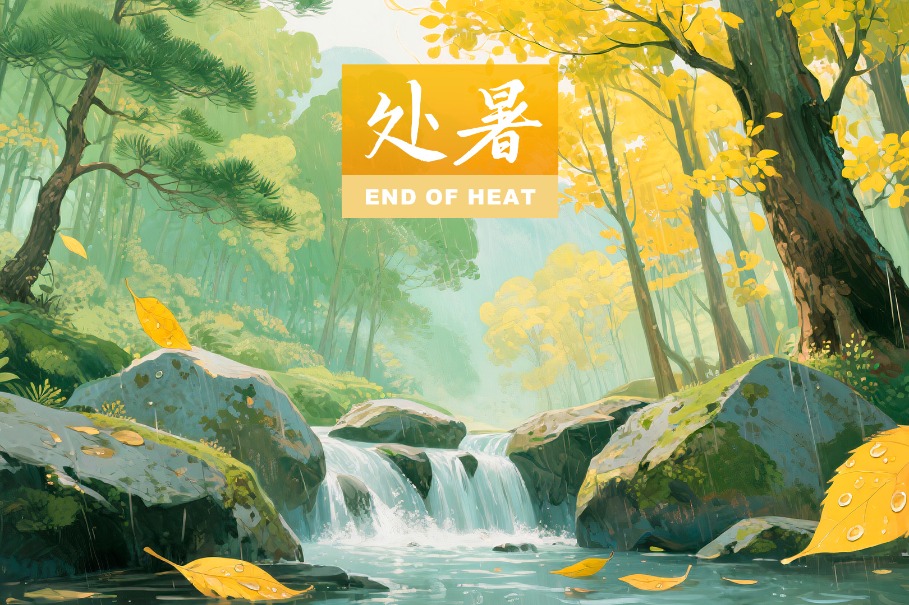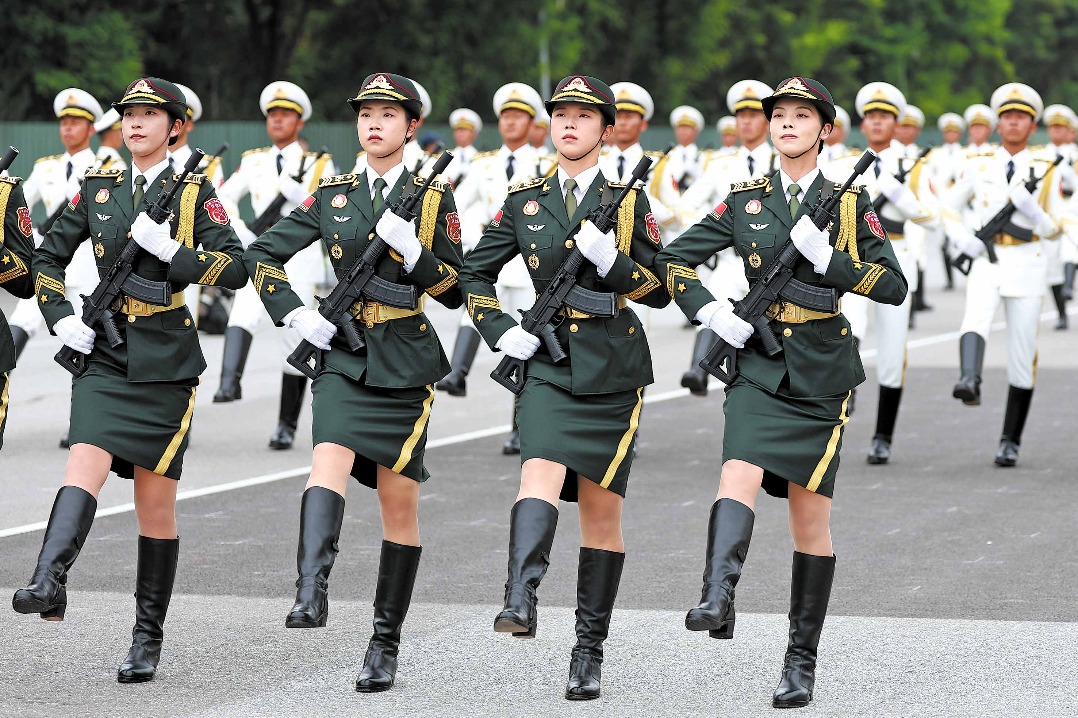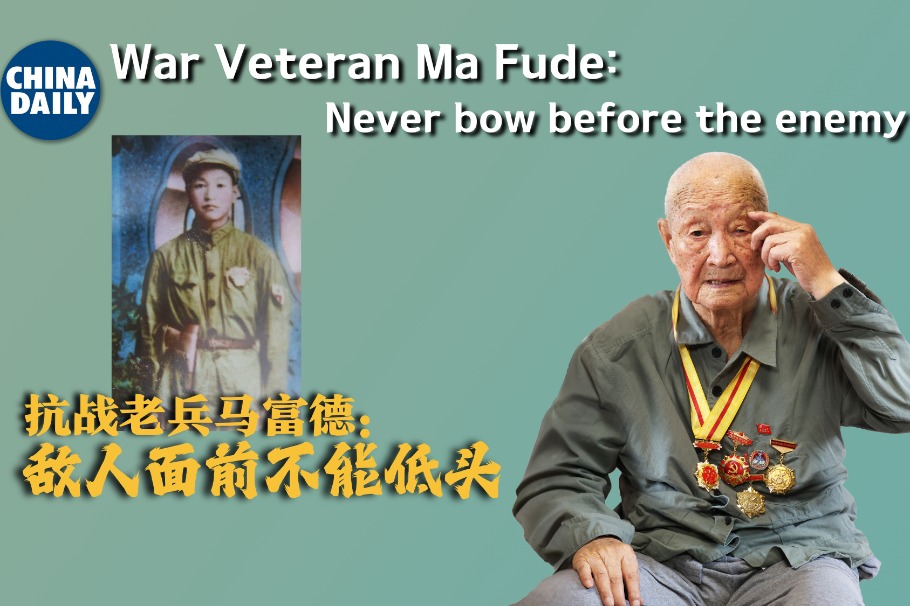TOWN PORTRAIT
A small island village leverages its artistic traditions for development, reports Chen Bowen in Haikou.

A stone tablet stands at the entrance of Xianliu village, on which is written: "Xianliu village, hometown of oil painting". The village, in Tunchang county, South China's Hainan province, is surrounded by ancient trees, fertile fields, lakes, mountains, small bridges and flowing streams. Its beautiful natural scenery has attracted painters from across China, who sit dipping their brushes in ink, dotting their works with color.
In Xianliu village, many used to paint with oils. Villagers worked during the harvest season, but in their spare time they would make oil paintings expressing their love for the village and life as a whole.
Xianliu village's oil painting tradition started in the 1980s, when a villager named Chen Youjun learned the artistic form. He went on to found the Tunchang Yanpuxuan Fine Arts School in 1984, which provided one- to two-year oil painting training courses for local inhabitants. The school educated more than 6,000 students, many of whom relocated to cities across China after graduation to develop their professional careers, forming what is now known as "Tunchang style".
With the migration of villagers and the rise to prominence of Tunchang oil paintings, in 2011, the county's government established an oil painting street, about 10 kilometers away from Xianliu village.
Built to be the "production workshop" of Tunchang oil painting, the street is lined with 24 oil painting studios. Visitors who enter one will find its walls covered with different types of oil paintings — classical and modern, figures and landscapes. The paintings are sold at home and abroad.
Painters have been attracted to set up shops here by preferential policies, such as low rent for commercial real estate. There are now a total of 48 studios on the street, most run in the form of family workshops. They employ 110 painters, many of whom graduated from the Tunchang Yanpuxuan Fine Arts School.
Zheng Hui, 33, came back to Tunchang and opened a studio on the oil painting street in 2015. "I feel less stressed working in my hometown, partly because of the local government's favorable financial support policies," she says.
Last year, 11 instructors from the oil painting committee of the Hainan Artists Association came to Tunchang's oil painting street to train more than 40 painters and primary and middle school art teachers in sketching. The technical education included teaching students to brighten up works through the application of colors and to select painting elements with a specific effect in mind.
Zheng participated in the event, sketching landscapes and figures under the guidance of the instructors.
"I feel that my creativity has been improved. I'm making art with Li and Miao ethnic cultural themes, as well as marine and tropical characteristics," she says. "I hope my paintings will have the opportunity to be featured in an exhibition."
In the next three years, the oil painting committee will also continue to provide instruction to Tunchang's oil painters, as well as invite Tunchang painters to showcase their work at exhibitions in Hainan's major cities, including Haikou and Sanya.
The fine arts school stopped enrolling students in 2018, and eventually closed in 2020.
Chen Chuantao, 48, son of the school's founder, started the Liuhe Painting Society in April of last year to teach children in the village oil painting for free, along with other volunteers.
He believes that the core of Tunchang's oil painting industry development lies in fostering talent. Twice a week, his organization provides oil painting lessons to a class of children from Xianliu Village Primary School. Most of these children's parents are migrant workers who left the village to work in big cities.
Chen Yating, a second grade student in the village, took classes with the Liuhe Painting Society. She thinks that oil painting is an emotional outlet and helps her better sense the beauty of life. "I can quickly observe and spot good things around me, and record them with my brush," she says. "I think my hand-eye coordination has been improved too."
Chen Chuantao says: "Oil painting can plant the seed of art in the hearts of children. They not only can cultivate a hobby, but also learn a skill for future employment.
"I also hope that this will contribute to passing down Xianliu village's oil painting culture."
Wu Jinxiu, a volunteer painter-teacher in her 40s, says that, in the beginning, she was "worried that the children would be reluctant to take oil painting classes". "I didn't expect them to show such great interest," Wu adds.
She plans to take the children out into the countryside and have them paint in a natural setting, improving their observation ability and painting skills.
Meanwhile, Tunchang county authorities are increasing art instruction in primary and junior middle schools. The county regularly holds oil painting competitions for students and arranges for local painters to give lectures, creating a favorable atmosphere for the cultivation of oil painting. Some schools with more educational resources have set up their own professional art courses, teaching photography, comic illustration and computer-aided design.
"Most of the children who learn painting do it as a hobby," says Chen Yejie, a volunteer painter-teacher in his 30s.
He believes, though, that such education will have a subtle but powerful impact. "We hope to create an artistic atmosphere in the village and cultivate a group of talented children who will become creative high-end professional painters in the future," he says.




Today's Top News
- Second round of recall votes targeting Kuomintang lawmakers fails
- Recall vote shows 'Taiwan independence' separatism doomed to fail
- China holds third rehearsal for event marking 80th anniversary of victory over Japanese aggression, fascism
- China activates emergency response as Typhoon Kajiki approaches
- Putin-Zelensky meeting not being planned, intense mutual attacks persist
- Ancient civilizations should adjust ties






























